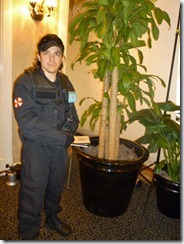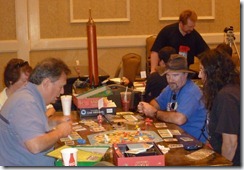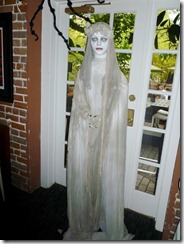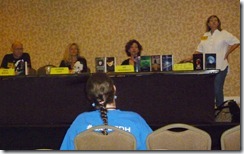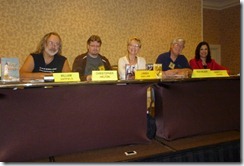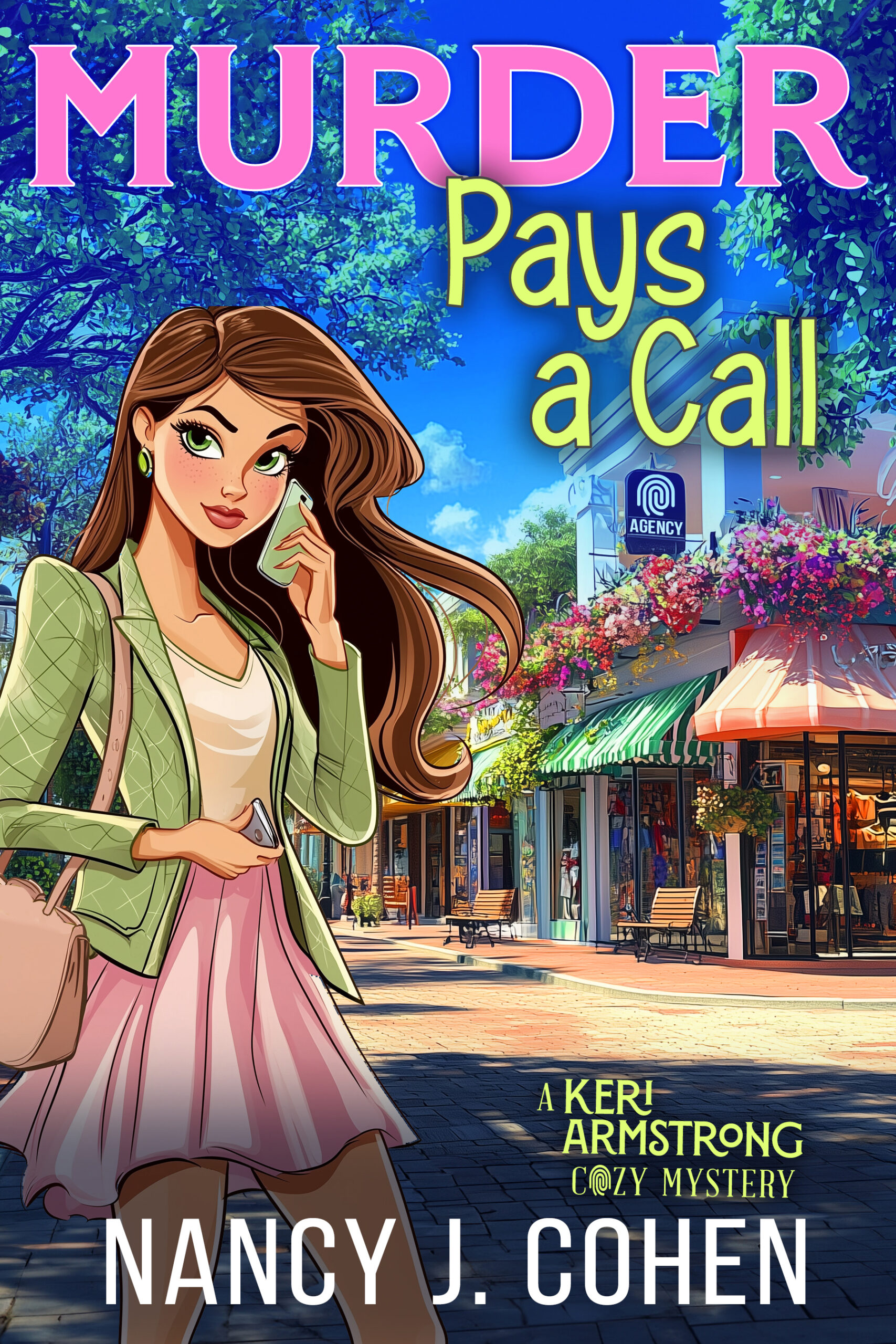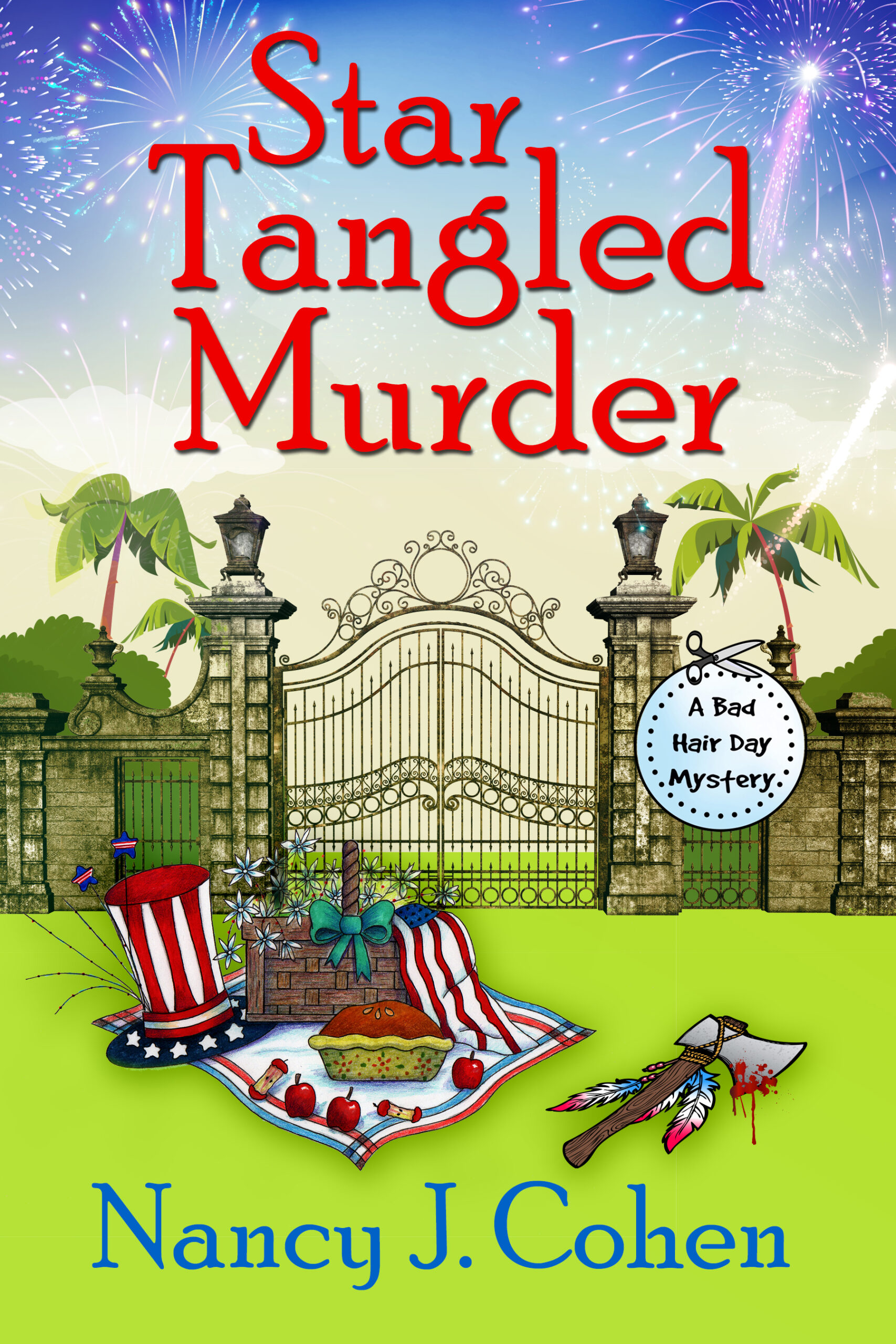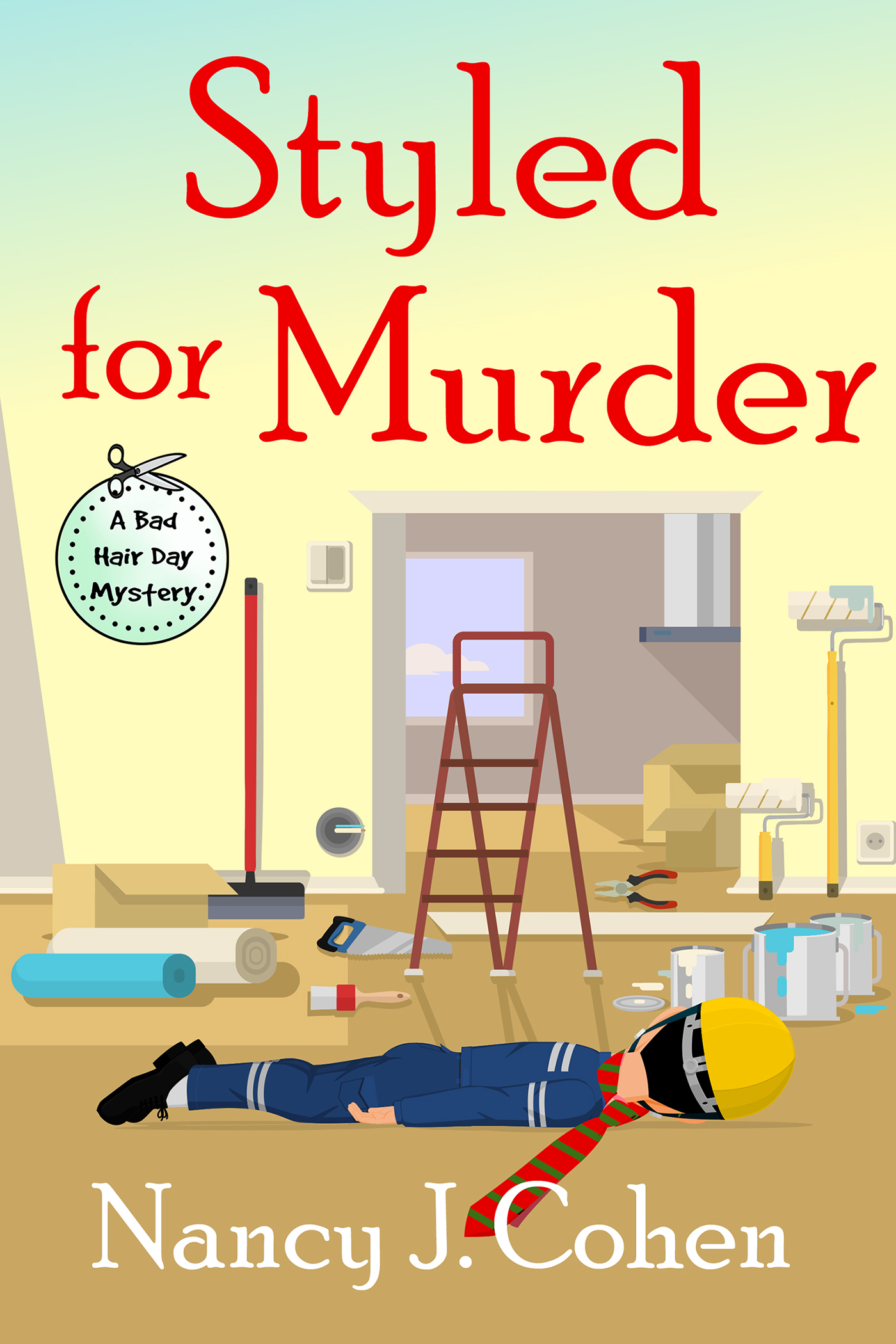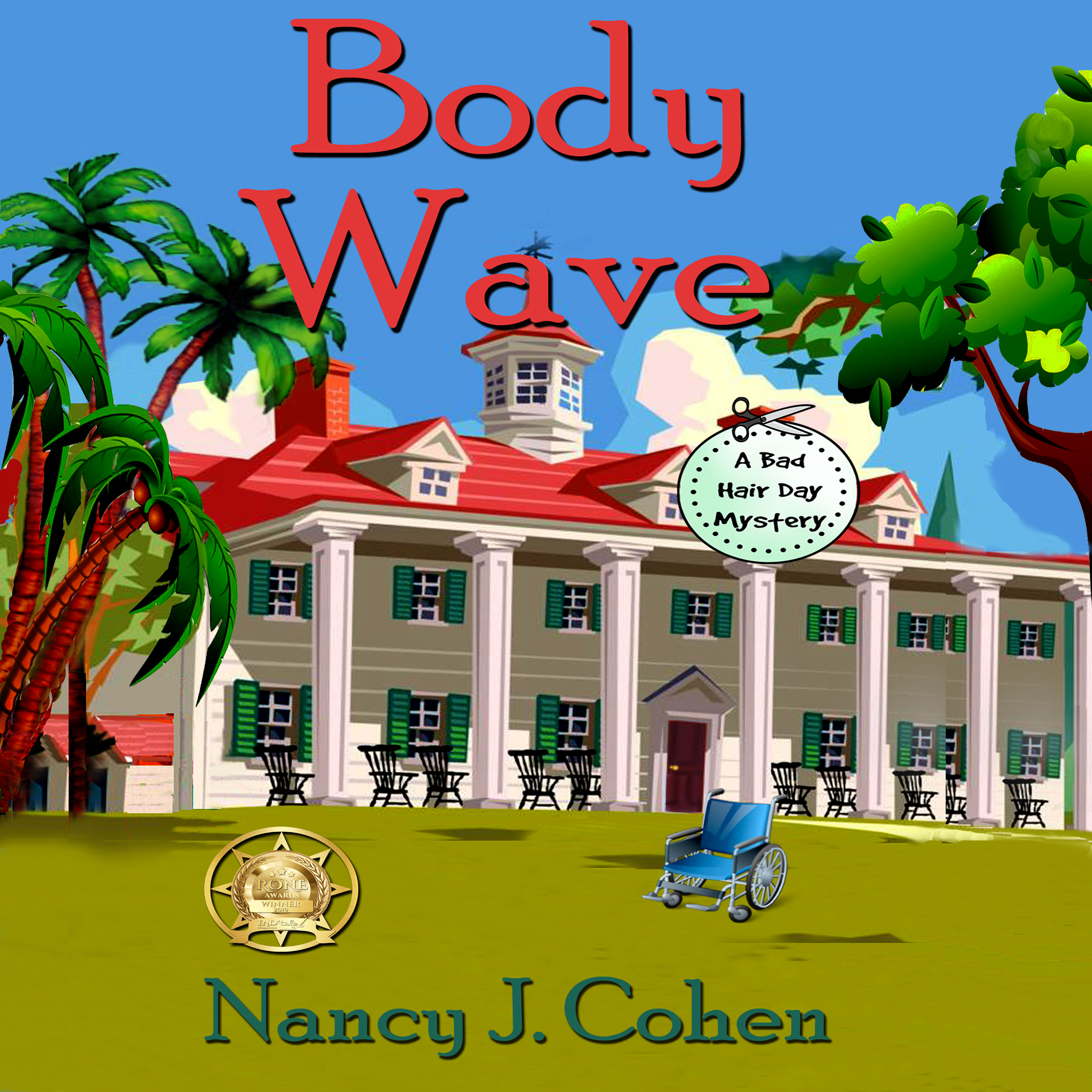Necronomicon was the first SciFi/Fantasy convention I’ve attended. In many ways, it’s similar to a mystery conference. There were more men than at a romance con. The panels were professional and moderated by a host. Aspiring authors attended in abundance. However, here’s the biggest difference: Gamers. One darkened breakout room held 3 rows of computers where people sat all day and sometimes all night playing Halo. Other guys sat at round tables engrossed in role playing games. And the hospitality room was open 24/7 with free food and soft drinks. A guard on sentry duty made sure you were wearing your badge if you walked by. The mode of dress differed, too. At a mystery con, many of the men would be wearing sport coats. Not so much here. No editor/agent appointments either. So it was a curious mix of writers and fans of the genre.
Authors who paid for a table sat in Author’s Alley down the hallway at tables with their books for sale. The Dealers’ Room was similar to the ones at mystery cons, where authors have to hope one of the vendors has their books for sale or else make a consignment deal. Few booksellers showed up here; vendors sold mostly jewelry and games and other knickknacks. Did this mean people weren’t booklovers? I only sold two books. Granted, my name isn’t known by this crowd, but I’m thinking most readers of this genre probably buy e-books since they’re tech savvy. Or else they are just not familiar with sci fi/paranormal romance. This convention was unlike those huge SciFi cons with celebrity stars. The cost is reasonable to attend and many panels are geared toward writers.
Instead of a forensics track like at a mystery writers con, this event had a science track led by scientist guests. All in all, it was a valuable introduction to an entirely new audience. People were very welcoming and if I went again, I’d start to recognize familiar faces. The panels were all interesting and parties ranged into the night if you were so inclined. We arrived the night before to settle in and become familiar with the hotel. Across the street was a big sports arena where a soccer game played on Saturday night. Down the road was the Dali museum. And nearby was a popular Mexican restaurant, the Red Mesa Cantina, where we had dinner. The food was delicious and the Halloween decorations really neat. I had grilled mahi mahi on a bed of plantains with mango salsa and my husband had shrimp with beans and rice and veggies.
Now here’s what I learned at some of the talks.
Friday
The Resurgence of Fairy Tales with Tracy Cornett, David Berger, Lucienne Diver, Kat Heckenbach, and K.L. Nappier.
How did you get interested in the genre? Kat replied that she wanted to see how contemporary fantasy fit the fairy tale model. Lucienne was interested in anthropology and how creation myths are similar and different for various cultures. Comparative religion sparked her interest. David was inspired by books and mythology. A high school English teacher, he mentioned how many mythologies are similar to each other regarding the Hero’s Journey.
What’s the difference between fantasy and fairy tales? David said both can have magical elements, but fairy tales are lighter. Our exposure is Disney-fied. Lucienne mentioned that the original fairytales were dark and cautionary. They were meant to strike fear into people and their dangers still apply. For example, the big bad Wolf could be considered the serial killer in the woods today. People are trying to recapture the earlier mythos and not the sickly sweet tales we’ve come to know. We would rather have the Princess save herself these days.
Can things swing too dark? Not if the demand is there, Lucienne advises. “Dark really sells.” She said that fairy tales don’t teach kids that there are dragons. The stories teach kids how to defeat dragons. David writes about Greek mythology. The kids in his classes write dark stories with vampires, werewolves, and dragons. The dark experience in literature can be safe and cathartic. K.L. Nappier added that the overall plot arc and character growth are important. Fairy tales derive from folklore, while mythology has religious origins. For example, myths have gods that are similar in the various creation myths. Legends have heroes, while folktales are more achievable by human standards.
Romantic Elements in F&SF: The Male Perspective with Nancy J. Cohen, William Hatfield, Chris Helton, Rick Wilber, and Linnea Sinclair. In this panel, we discussed the male viewpoint in romantic relationships. Some of the men write female protagonists. Linnea suggested you have to target the audience to know what readers you are trying to reach. And Chris gets into the emotional depth of his male characters so he has no problem showing their feelings. You can show characterization through dialogue as well as action.
The Future of “Star Trek” was a fun panel where we discussed the recent movie that reinvented the series. People had vocal opinions on whether they liked certain elements or not, and a lively debate ensued. You could tell from the episodes bantered about that the audience members felt great affection for the show, whichever version we discussed.
A delicious Italian buffet dinner followed the last panel after which Guest of Honor Linnea Sinclair gave an inspirational speech. After 8 PM, you could either attend more panels such as Settling Mars: The Next Great Challenge; You call it Urban Fantasy, I call it Horror; Dr. Who and the 21st-Century; It’s the End of the World: Apocalyptic Fiction. If you are still awake at 11 PM, you could attend Sex and Science Fiction/Fantasy or still other topics. There were ongoing sing-alongs, cartoons, art shows, and role-playing games into the wee hours. Pix below: Linnea Sinclair on left. Bestselling author Timothy Zahn with me and Linnea on right.









